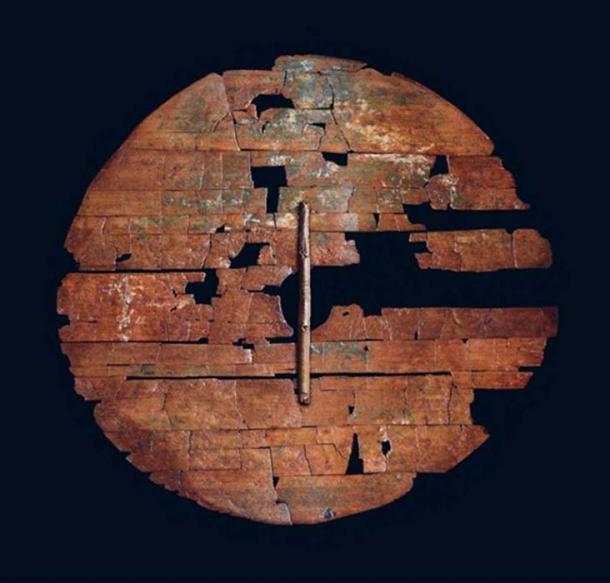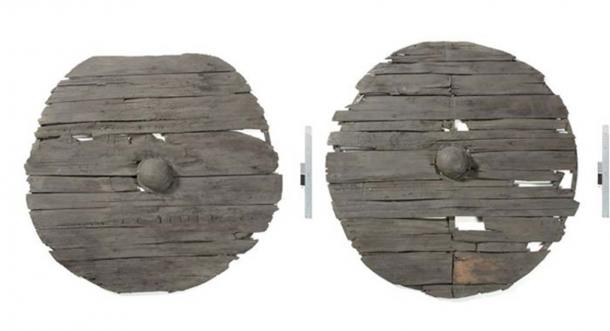By ThorNews
According to Rolf Warming, an archaeologist and researcher at the University of Copenhagen, the Vikings did not use shield walls in combat. A typical Viking shield was relatively small and light, and used as an active weapon.
“There is a widespread misunderstanding among Viking enthusiasts and us archaeologists that the Vikings have been standing shield-by-shield forming a close formation in battle,” Warming said to the Danish research portal videnskap.dk.
Not with Shield Walls, But How DID Vikings Fight in Battle?
His research results are supported by archaeological finds, written texts, and known Viking fighting techniques that were based on surprise, speed, and weapon skills.
Warming, who is also the founder of the Society for Combat Archaeology , has studied how the Vikings fought in battle. He finds no evidence of the use of shield walls in medieval texts or through practical tests.
The shield wall we see in the popular TV series “Vikings” or “The Last Kingdom” is very nicely made, but unfortunately not true.
Individual Viking Warriors
Among other facts, his theory is based upon an archaeological experiment where Warming equipped himself with armor, a helmet, and copies of old Viking shields to test different combat situations against an opponent armed with a sharp sword.
The shield was severely damaged when it was used the same way as in a shield wall, but when Warming used it actively to avoid direct hits from his opponent, the damage was considerably less.

Viking shields were probably used more actively in battle. ( alex_marina /Adobe Stock)
The archaeologist believes that there must have been far more disadvantages than advantages by using shield walls and that the thin and relatively light Viking shields would not have lasted very long.
In addition to the practical tests, the researcher also reviewed a number of historical sources from the Viking Age and the Middle Ages.
He did not find any descriptions of Viking shield walls.
Warming concludes that the Vikings probably fought the enemy actively using their shields, either to avoid being hit by swords or axes, or to hit the enemy with the edge.
Sixty-Four Painted Shields
In 2010, an almost complete hand-held shield was excavated at the Trelleborg Viking ring fortress dated to the reign of Harold Bluetooth of Denmark (c. 958 – 986 AD). So far, this is the only complete shield found in Denmark dating back to the Viking Age.

Fragments from the Trelleborg shield put together. (Photo: National Museum of Denmark)
With a diameter of 85 centimeters (33.46 inches), eight millimeters thick near the center and thinning to five millimeters at the edges, the Trelleborg shield was relatively light.
It is made of seven fir planks, has a hole in the middle, and a moderately decorated handle. Originally there must have been a boss, but it was never found.
If the Trelleborg shield was typical for the Viking Age, it was originally covered with animal skin to make it stronger, and it was probably painted in bright colors.
In addition to the finding at Trelleborg, complete shields were also found in the Gokstad ship mound in Norway. The Viking ship was excavated together with a large number of grave goods – including sixty-four round shields painted in blue or yellow which were used as a so-called “shield rack” to protect the crew against incoming arrows and spears.

Two of the sixty-four shields from the Gokstad ship, thirty-two on each side. Every second was painted in yellow or black and the longship must have been a magnificent sight. (Photo: Museum of Cultural History, Oslo)
The Gokstad shields are like the shield found at Trelleborg – relatively thin – and research has shown that they would easily split when struck with arrows, swords, and axes.
This strengthens the theory that they were originally covered with animal skin: The skin shrinks a little when it dries out, something that increases the strength.
By using animal skin, it was also possible to use relatively thin pieces of wood and thereby keep the weight as low as possible.
However, the shields were not strong enough (or big enough) to withstand multiple hits from swords and axes in a shield wall – something that confirms Warming’s theory.
Combat Techniques of the Norsemen
It is known that the Vikings used a wide range of combat techniques. One of these is the so-called svinfylking (”Swine Array” or “Boar’s Snout”), a version of the wedge formation used to attack and break through enemy shield walls with an ax as the primary weapon , something that would create fear and panic.

Svinfylking – sketch. (Author provided)
The disadvantage of the svinfylking technique is that it would not work if the attackers had to make a quick retreat.
The Norse sagas also confirm the Viking mentality: Norsemen were fearless warriors who did not hide behind shield walls while they waited for the enemy to attack.
Top image: Illustration of a Viking shield wall (unknown artist)
The article ‘ Dissolving Myths: Vikings Did NOT Hide Behind Shield Walls’ by Thor Lanesskog was originally published on ThorNews and has been republished with permission.
Updated on January 19, 2021.
 RSS Feed
RSS Feed















 January 20th, 2021
January 20th, 2021  Awake Goy
Awake Goy  Posted in
Posted in  Tags:
Tags: 













